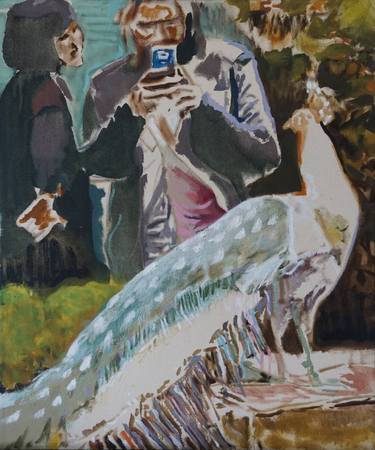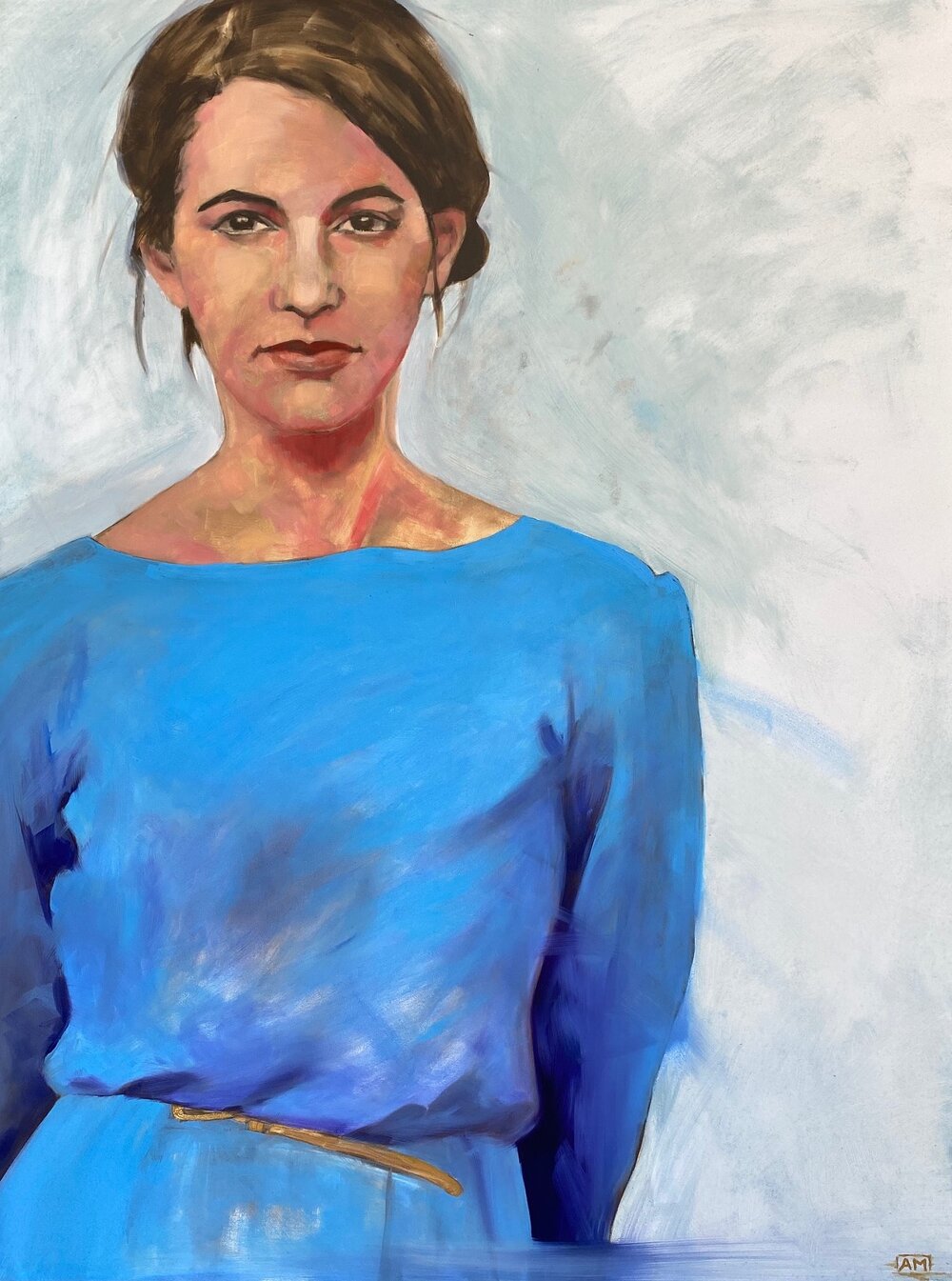The Advancement of Metaphorical Oil Painting: Understanding Its Historic Relevance and Modern Interpretations
The development of metaphorical oil painting offers as a compelling lens with which to examine the interplay in between creative expression and historic context. Contemporary artists, attracting from this rich heritage, are now reinterpreting the human number in ways that challenge typical narratives.
Origins of Metaphorical Oil Painting
The origins of metaphorical oil painting can be traced back to the early Renaissance in Europe, especially in the 15th century. The growth of oil paint allowed for greater depth of color and information, boosting the realistic look and vibrancy of their job.

In this transformative age, figures were typically portrayed within contextually rich environments, showcasing not only their physical characteristics but also their emotional states. Leaders such as Jan van Eyck and Titian took advantage of the medium's flexibility, employing layering strategies to attain brightness and texture. This advancement helped with the portrayal of detailed materials and the subtleties of complexion, contributing to the growth of portrait and narrative scenes.
In Addition, the Renaissance focus on humanism fostered an appreciation for individualism, which subsequently influenced musicians to produce even more dynamic and relatable numbers - figurative oil painting. Consequently, metaphorical oil painting arised as a powerful automobile for storytelling and psychological engagement, preparing for future creative activities and styles
Key Historic Motions
Considerable historical motions have formed the advancement of metaphorical oil paint, each adding one-of-a-kind ideologies and techniques that expanded the medium's possibilities. The Renaissance marked a pivotal moment, stressing realism and the human type, with musicians like Leonardo da Vinci and Michelangelo pushing the limits of physiological precision and viewpoint. Following this, the Baroque era brought remarkable contrasts of light and darkness, exemplified by Caravaggio, who instilled spiritual themes with intense emotionality.
The 19th century presented Romanticism and Realism, where artists such as Delacroix and Courbet tested classical perfects, concentrating on private expression and daily life. The advent of Impressionism even more reinvented the tool by emphasizing the impacts of light and color, bring about a separation from traditional representation.
In the early 20th century, activities like Expressionism and Cubism redefined metaphorical painting through abstraction and the exploration of emotional depth. Each of these motions not just mirrored the social adjustments of their times yet additionally laid the groundwork for contemporary interpretations. The interplay between these historical motions has actually produced an abundant tapestry of designs and ideologies, influencing modern artists in their pursuit of capturing the human experience on canvas.
Techniques and Products Advancement

Throughout the Baroque period, strategies such as chiaroscuro and sfumato emerged, boosting the emotional resonance of figurative compositions. Musicians started to try out lusters and impasto, controling appearance and brightness. By the 19th century, innovations like the usage of pre-mixed paints in tubes revolutionized access, allowing musicians to paint en plein air and catch the short lived impacts of light.
The 20th century witnessed the introduction of artificial pigments and mediums, which broadened the scheme and changed the uniformity of oil paints. Furthermore, the expedition of new application methods, such as scheme knives and brushes of differing stiffness, additional varied artistic expression. Collectively, these innovations reflect the progressing partnership in between materials, methods, and the imaginative vision inherent in metaphorical oil painting.

Contemporary Interpretations
Contemporary interpretations of metaphorical oil paint show a dynamic discussion in between tradition and innovation, where musicians challenge developed standards and explore varied motifs. This advancement materializes in numerous means, as modern musicians blend classic techniques with modern concepts, frequently resolving social, political, and individual narratives.
Several specialists attract ideas from historic works, yet they instill their items with contemporary point of views, utilizing the human form as a vehicle for commentary on identification, sex, and culture. Artists significantly explore abstraction, distortion, and blended media, which enables a more comprehensive analysis of the figure and its context.
Moreover, making use of brilliant color schemes and unique structures frequently offers to interrupt conventional watching experiences, prompting crucial involvement from target markets. This shift in emphasis extends past visual appeals; it reflects an expanding awareness of the intricacies of human experience in an interconnected globe.
As metaphorical oil painting remains to develop, it continues to be an important tool for exploring the subtleties of contemporary life, personifying both a respect for heritage and a commitment to modern idea. The result is an abundant tapestry of expression that reverberates with the complexities of the modern-day human condition.
Effect on Modern Art
The influence of metaphorical oil painting on modern-day art is extensive, as it has continuously motivated a myriad of imaginative movements and methods throughout the 21st and 20th centuries. From Expressionism to Surrealism and past, the expedition of the human number has remained a central style, enabling musicians to share complex emotions and narratives. This emphasis on figurative representation has caused a re-examination of typical strategies, resulting in innovative methods that blend realism with abstraction.
Furthermore, contemporary artists have accepted figurative oil painting as a way to attend to social and political concerns, making use of the tool to test assumptions of sex, society, and identification. The rebirth of rate of interest in metaphorical work browse around here in recent years shows a hoping for connection in a progressively digital globe, where human experience and feeling are vital.
Furthermore, the dialogue between metaphorical oil paint and contemporary art appears in the works of musicians such as Kehinde Wiley and Jenny Saville, that make use of historical references while instilling their items with contemporary relevance. Ultimately, metaphorical oil painting continues to form and redefine contemporary artistic expression, underscoring its long-lasting importance in the art world.
Verdict
The advancement of metaphorical oil painting emphasizes its historic importance and adaptability throughout different artistic activities. From the naturalism of the Renaissance to the emotive expressions of the Baroque and the cutting-edge techniques of modernity, this medium has actually constantly transformed. Contemporary analyses show dynamic shades and unique compositions, fostering essential interaction with social and political styles. Ultimately, figurative oil paint stays a vital tool for checking out the human experience, reverberating exceptionally in today's electronic landscape.
The advancement of metaphorical oil painting offers as a compelling lens with which to examine the interplay between i was reading this imaginative expression and historic context.Significant historical motions have actually formed the advancement of figurative oil painting, each contributing distinct ideologies and methods that broadened the article tool's possibilities.As historical motions formed the trajectory of metaphorical oil painting, the materials and methods used by musicians have actually additionally undergone substantial improvements. figurative oil painting.The influence of metaphorical oil paint on modern-day art is extensive, as it has actually continually influenced a myriad of artistic movements and practices throughout the 20th and 21st centuries.The evolution of figurative oil paint emphasizes its historical importance and versatility across different creative movements
Comments on “How Figurative Oil Painting Transforms Traditional Artistic Expression”